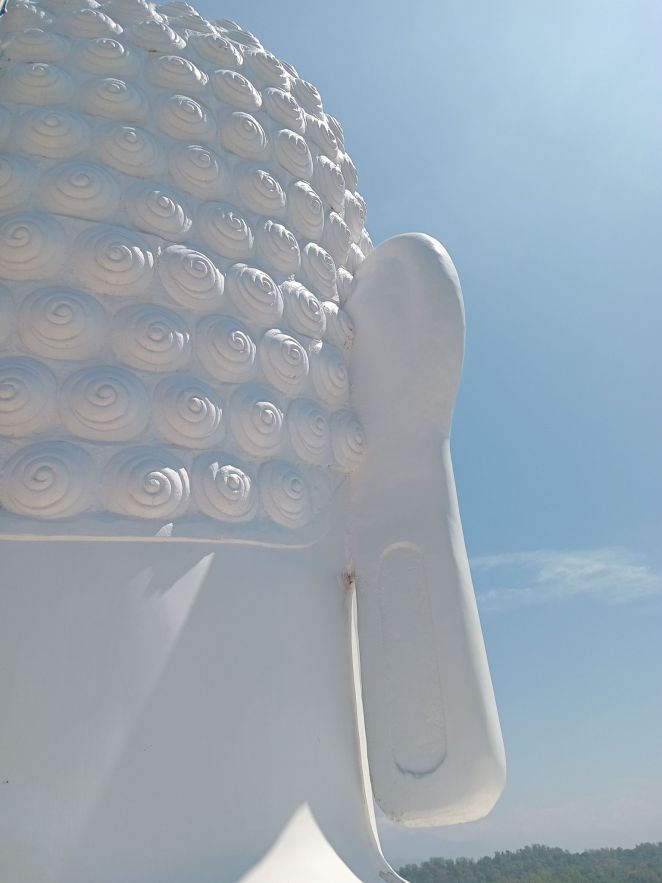In the second part of a series of’ Buddhist pilgrim ‘travelogues’ in Sri Lanka, here is one about my trip to visit the sacred Buddha’s tooth relic in the central city of Kandy and other Buddhist statues and sites nearby. I spent most of my one month in Sri Lanka, in Kandy as the base for day trips but also to write (and watch the 17th Karmapa’s teachings online, which started that month) and practice. When I had some spare time, I visited other sacred pilgrimage sites nearby, more on that in the next articles.
Kandy is a lovely magical place with the lake as its mystical and misty heart. Wildlife and nature are in abundance there and it is a bird-watcher’s paradise (for more on that see below). Kandy was a lot more touristy than Kelaniya, with many foreigners visiting daily to take photos rather than as devout pilgrims. Nonetheless, the early morning ritual for the public showing of the tooth in particular (5.30am) was packed with local pilgrims and devotees dressed in white, all coming to offer flowers and food to the relic. Locals would also stop outside the temple as they walked by during the ritual times daily and put their hands together in prayer and reverence.
The natural and material abundance of Kandy, compared to other parts of Sri Lanka I visited, seemed very much connected to the abundant reverence and devotion and offerings made there to the tooth relic by the local people. However, as a solo female traveller I felt the patriarchal culture and attention there more than in other places, not only with the temple dress code application, but with mild street harassment and male attention. Staying there for more than a week, I became an object of interest for lone Sri Lankan men (it was always men not women) who often made me feel uncomfortable with their constant ‘hellos’, stares and invaded my personal space and privacy, which did not happen at all in other countries, such as with Thai man while I was in Thailand. In that respect, it was not so easy, and one can only imagine how difficult it must have been for lone female pilgrims like Yeshe Tsogyel in caves and very remote places!
Nonetheless, Kandy and the tooth relic temple was certainly my favourite place in Sri Lanka to visit and stay as a Buddhist pilgrim, for the relic, the facilities and ease and comfort for day trips to other sites. It did not escape my attention that the word ‘Kandy’ in American English means ‘candy/sweets’, and it was almost like Buddha was smiling and having a laugh too with his sacred tooth relic being in the centre of the very sweet and lovely Kandy.
Music? Sri Lankan traditional music during the historical procession of the tooth relic in Kandy in June and July , Sweet Dreams by the Eurythmics, I Want Candy by Bow Wow Wow, “he’s got everything that I desire, sets the summer sun on fire…..”
Written and compiled by Adele Tomlin, 20th March 2024.
The train from Colombo to Kandy: heavenly hills
After a brief stay in Colombo visiting the Kelaniya (the third place Buddha visited), I travelled alone on the air-conditioned Express train from Colombo Fort station (at a bargain price of 5GBP) to Kandy, which took about two and a half hours to get there. Just a note about the weather in SE Asia Thailand, Vietnam and Sri Lanka, the temperatures are regularly above 30 degrees C and humidity levels are always above 60. So moving around can be exhausting and even after a half hour, one becomes drenched in sweat.So being able to have an AC room and train journey is a great, and essential break from the extreme heat and humidity in that region.

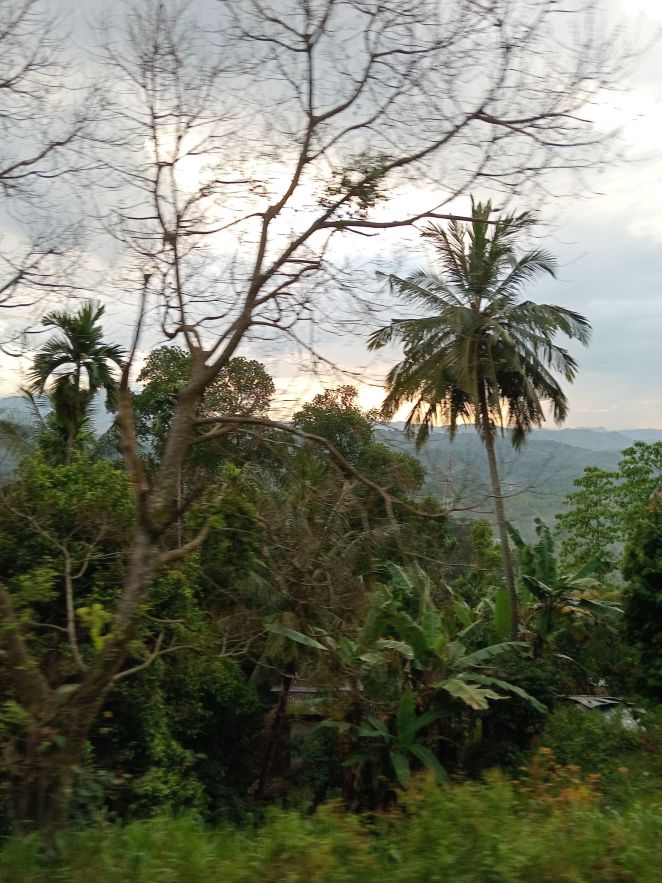
Kandy (Sinhala: Mahanuwara) is a major city of Sri Lanka and was the last capital of the ancient kings’ era, situated in the midst of hills in the Kandy plateau, which crosses an area of tropical plantations, mainly tea. Kandy is home of the Temple of the Tooth Relic (Sri Dalada Maligawa), one of the most sacred places of worship in the Buddhist world. It was declared a World Heritage Site by UNESCO in 1988. Historically, the local Buddhist rulers resisted Portuguese, Dutch, and British colonial expansion and occupation.
There is a beautiful lake in the centre of Kandy, and a small town with all the facilities a traveller, or worker, needs for a base to refresh and relax, such as great cafes, restaurants, shops, banks and so on. However, the heart of Kandy is the Buddha’s tooth relic, spectacularly housed in the Sri Dalada Maligawa temple next to the lake. I also visited Nàtha Devàla temple said to have been in existence even before the Tooth Relic was brought to Kandy. The oldest extant structure in Kandy, it is said to have been built by King Vikramabahu III in the 14th century. As well, as the huge Buddha statue on a hilltop overlooking the tooth temple complex.
Here is a short article sharing some historical information about the tooth relic and how it came from India to be in Sri Lanka, my experience of visiting the temple and some photos I took of the main Kandy temple which houses the tooth relic and other treasures and artworks contained within that temple. As well as about the oldest structure within the temple grounds said to have been present there when the tooth relic came to Kandy.
Buddha’s female disciple, Arya Kshema and the tooth relic of the Buddha in Sri Lanka
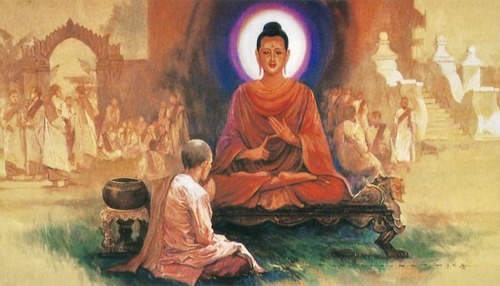
According to Sri Lankan legends, when the Buddha died his body was cremated in a sandalwood pyre at Kushinagar and his left canine tooth was retrieved from the funeral pyre by his female disciple, Arya Kshema. Kshema then gave it to King Brahmadatte for veneration. It became a royal possession in Brahmadatte’s country and was kept in the city of Dantapura (modern Dantapuram).
A belief grew that whoever possessed the tooth relic had a divine right to rule that land. The Dāṭhāvaṃsa recounts the tale of a war fought over the relic 800 years later between Guhasiva of the republic of Kalinga and a king named Pandu.
The final attempt made by a neighboring state to make war with Guhasiva for the possession of the Tooth relic caused this venerated relic to leave the Indian shores. By this time, Buddhism was well rooted in Sri Lanka, and the island rulers maintained close relations with the Indian states that fostered Buddhism. Apparently, it was for this reason that the Kalinga ruler, in imminent danger of losing in battle, decided to send the Tooth relic to his friend, the Sri Lankan king.
After about eight centuries of its existence in India, the tooth relic was secretly taken away by Princess Hemamala & Prince Dantha said to be the son-in-law and daughter of Guhasiva. from the city of Kalinga in ancient India, during the reign of King Keerthi Sri Meghavarna (Kithsirimevan 301 -328). The literary works like Dathuvamsa, Daladasirita, and the chronicle Mahavamsa, record many and varied vicissitudes that the couple went through en route to Sri Lanka in order to safeguard the relic. It is recorded that the prince and the princess donned the garb of ascetics and carried the relic hidden within the hair of Hemamala so as not to be noticed by passersby. They set sail from Tamralipti, a port at the mouth of the river Ganges, and landed in Sri Lanka at the port of Lankapattana (now Ilankeiturei). There are various artworks in the temple showing the couple, including this one here, just near the upstairs room where the tooth relic is kept. A twentieth-century wall painting of the well-known monastery of Kelaniya (about 5 miles east of Colombo), depicts this episode in a classic style by a local artist (Solius Mendis):
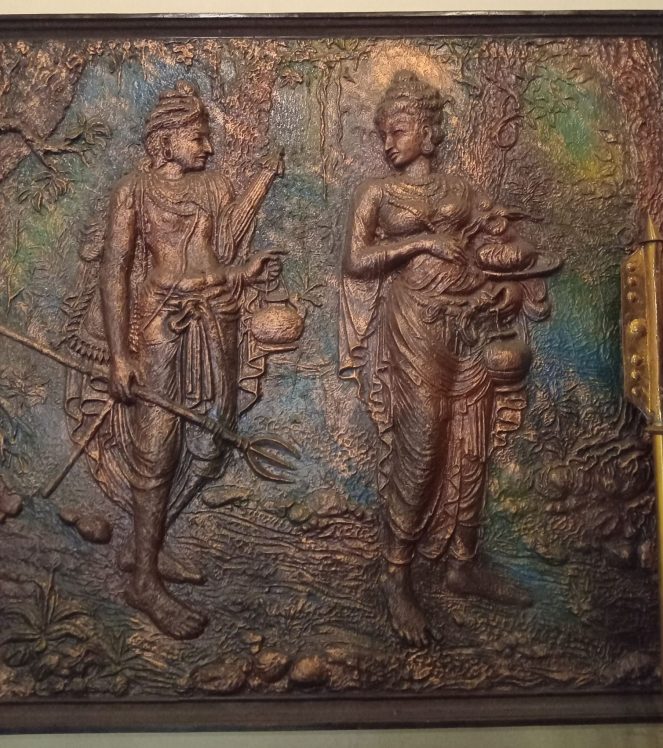
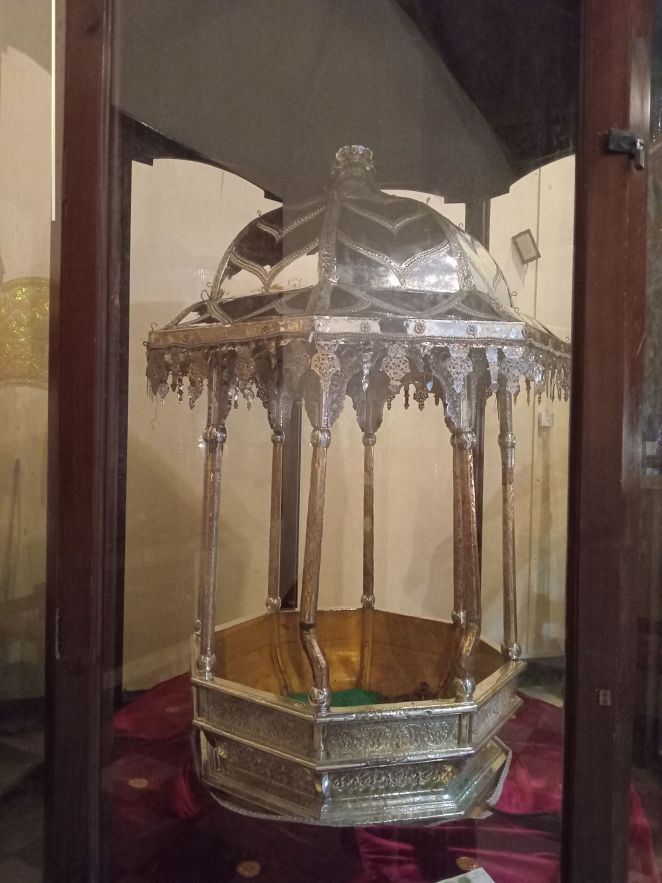
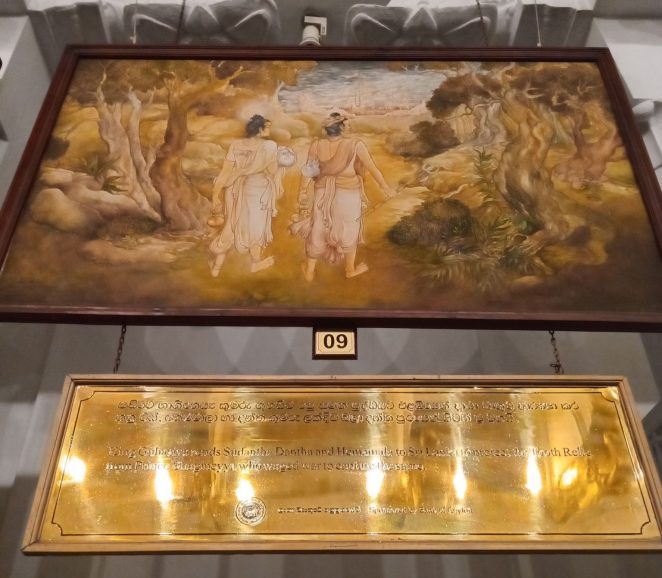

At the time of Dantha’s and Hemamali’s arrival on the island, King Kirti Sri Megavanna or Kithsirimevan ruled Sri Lanka. The King was overjoyed when he heard the news and warmly welcomed the royal couple and received the Sacred Tooth Relic with great veneration. He built a beautiful palace within the Royal Palace Complex itself and enshrined the Relic in it. Thereafter, he ordered that an annual perahera be held in honour of the Sacred Relic.
The temple of the Buddha’s tooth relic in Kandy, Sri Lanka
As it says on the official temple website:
“The Temple of the Sacred Tooth Relic is a world-renowned place of worship, where the left canine tooth of Gautama Buddha is enshrined….The architecture is of unique Kandyan architectural style with a combination of the unique style used to build “Dalada Mandira” the shrines which housed the Sacred Tooth Relic previously in other kingdoms.”
Kandy Lake and the outer temple building


In Kandy, the last Kingdom the Temple of the Sacred Tooth Relic continues to be the greatest shrine to receive the utmost veneration of the Buddhist world.
“The first “Dalada Madura” in Kandy, which housed the Sacred Tooth Relic was built by King Wimaladharmasuriya the first during his reign from year 1592 – 1604. History reveals that this was destroyed by the Portuguese during their invasions. The second temple was built in the same location by King Rajasinghe the Second during his reign from 1635 – 1687, which was burnt by the Dutch. The Dalada history says in year 1687 King Wimaladharmasuriya the Second built a 3 storeyed Dalada Madura and performed Dalada rituals with great devotion but with time the building was decayed and destroyed. Later his son King Sri Veera Parakrama Narendrasinghe who reigned from 1707 – 1739 built the 2 storeyed Dalada Madura which one can see today. The South Indian Kings who ruled the country from Senkadagala renovated and protected the shrine which was built by King Narendrasinghe. The temple was finely renovated and beautified by King Keerthi Sri Rajasinghe to its present appearance. Paththirippuwa or the Octagonal Pavilion was constructed by King Sri Wickrama Rajasinghe who reigned from year 1798 – 1815.
Protection of the Sacred Tooth Relic and conducting religious rituals without a break is being carried out to the present day under the strict surveillance of the three chief custodians of the Tooth Relic, the most Venerable Mahanayake theros of Malwatta and Asgiriya chapters and the lay custodian, the Diyawadana Nilame.
The entrance fee was a reasonable 2000 Sri Lankan rupees (about 5 GBP) and there was a VERY strict dress code with security guards stopping people (particularly women) going in for minor breaches (more on that in another article!).



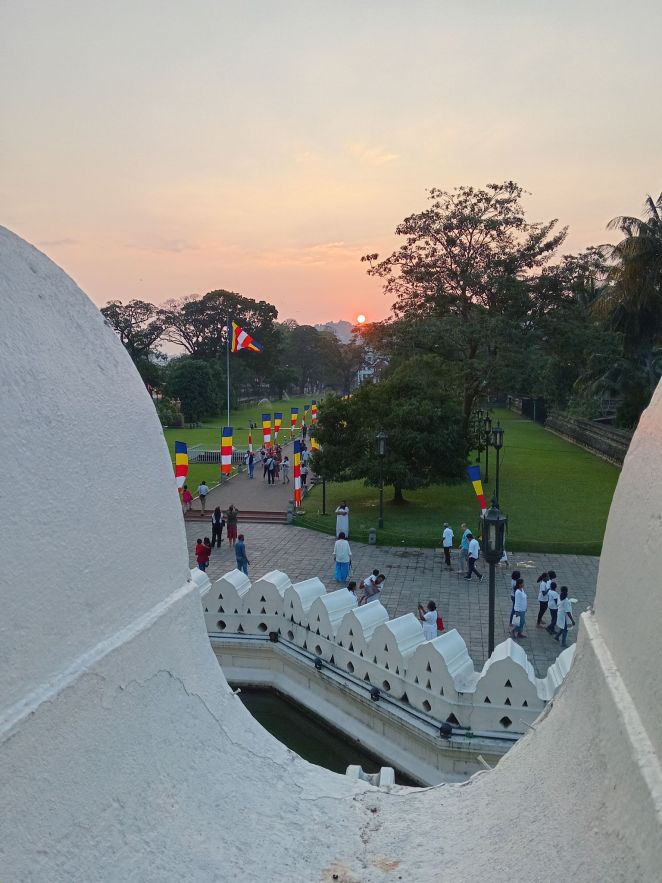


Inside the inner sanctum: flower offerings, music and thrice-daily rituals

I visited and made offerings and aspirations to the tooth relic several times on my first day in Kandy, which was the first day of the lunar New Year. There are three daily times (5.30am, 9.30am and 6.30 pm)when the custodians of the tooth relic conduct the special ritual whereby the relic is brought out of the safe vaults for public viewing up into the temple space above, see detail here. All the services commence with the beating of Hewisi drums. I was moved to tears at how revered and worshipped the relic was by the local people and pilgrims who came to the early morning ritual. Although, there were a lot more tourists here than at the Kelaniya stupa and temple where some of Buddha’s relics are also housed.

Photography was not allowed of the tooth relic and stupa it is housed in. Devotees are given a few seconds to view it, not up close, and offer something to the custodians watching it. When the time is ready and the ritual has finished the tooth relic is brought upstairs and people are allowed to view the small stupa and relic for a few seconds only.
The flowers that were sold there daily for the offerings outside the temple gate by local people, were absolutely stunning, white and pink lotuses and the Sri Lankan national flower, the blue water lily. They were not expensive to purchase either and made great offerings for my personal Buddhist shrine in my guesthouse room too (see photos):





The Octagon room and the story of the Buddha’s tooth relic and its journey to Sri Lanka and preservation in Kandy
Inside the tooth temple complex was also a building/room called The Octagon, which houses several artworks, ancient Pali Buddhist scriptures and description plaques detailing how the Buddha’s tooth housed in the temple came to Kandy and how it was kept there and preserved to this day.

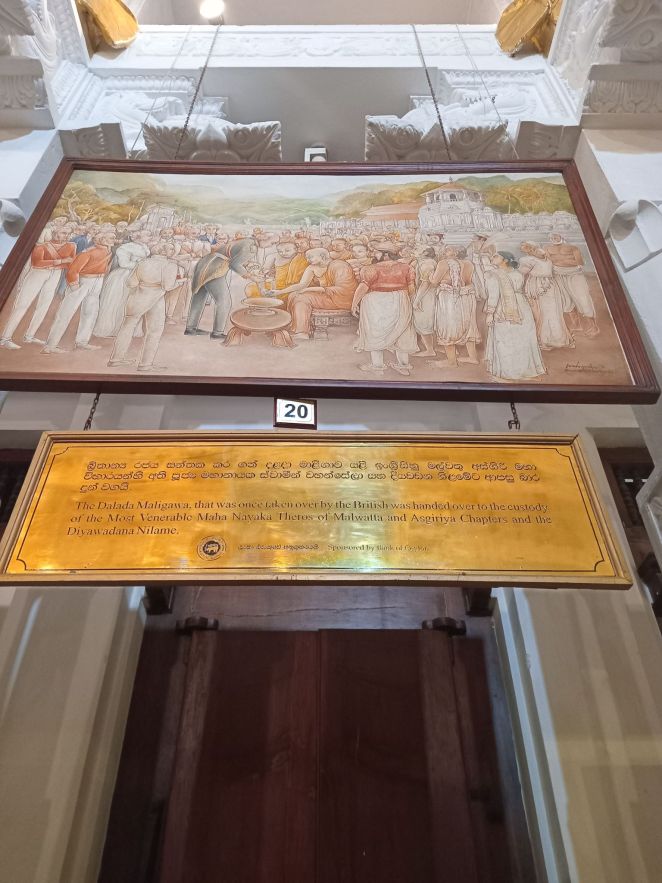
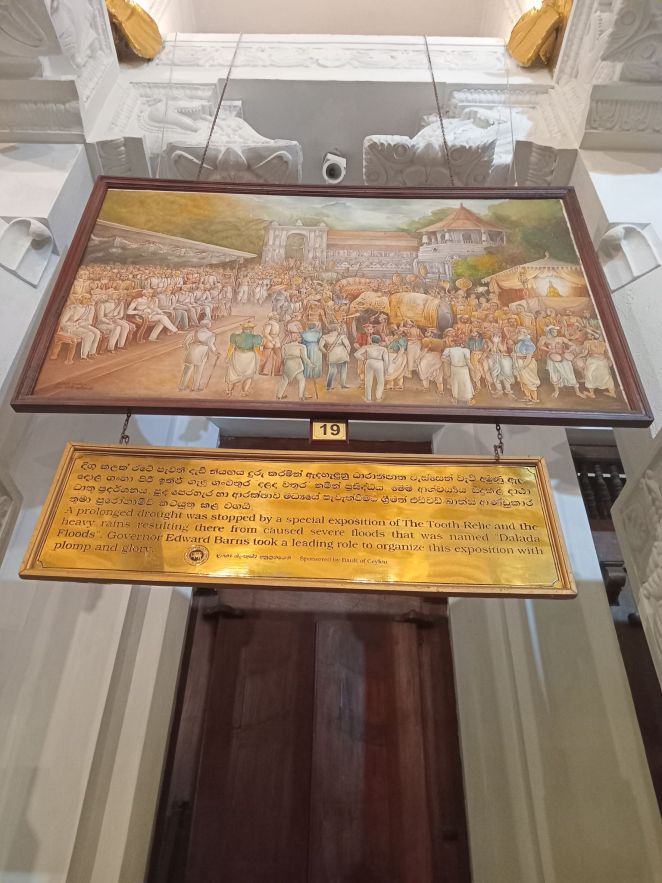





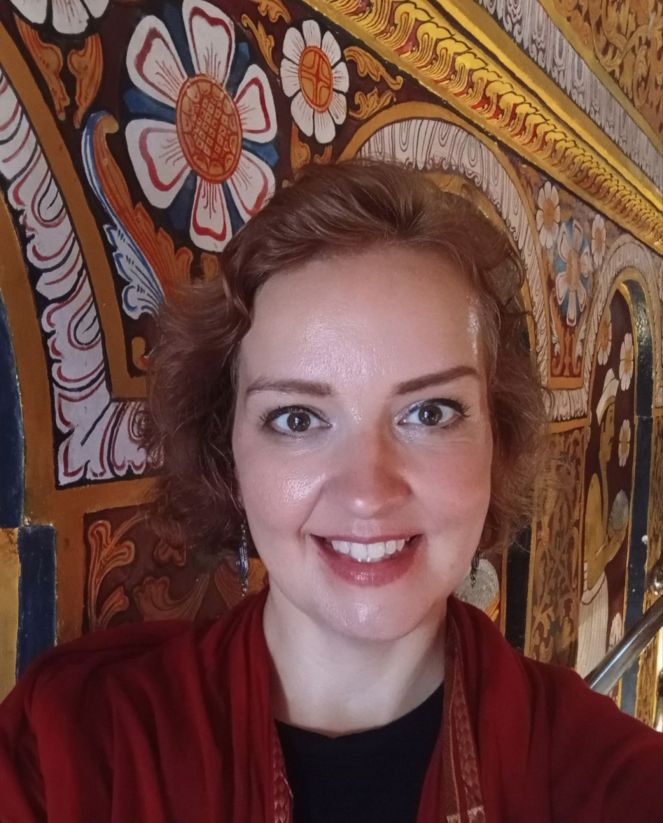
The oldest temple structure in Kandy: Nàtha Devàla
Right next to the Kandy tooth temple there is Nàtha Devàla is a shrine located on the terrace, in front of the Royal Palace complex in Kandy. It is said to have been in existence even before the Tooth Relic was brought to Kandy. While there I visited the building and the stupa next to it, said to contain the Buddha’s bowl.

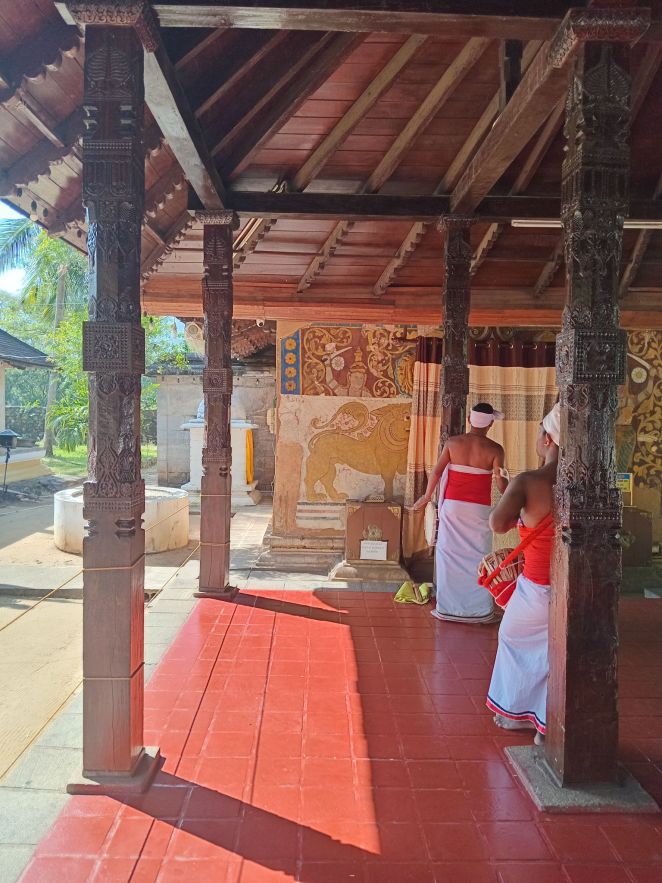


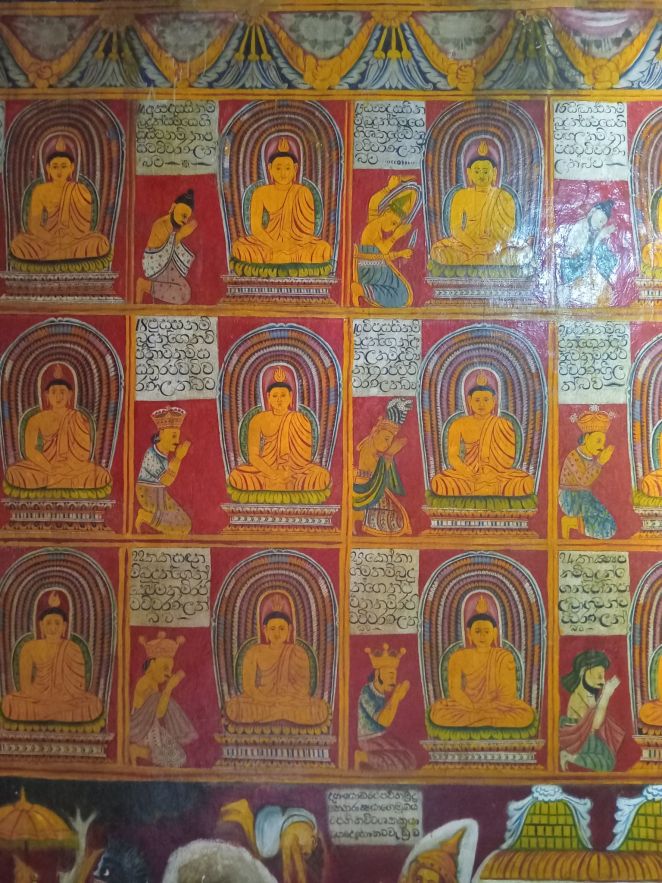



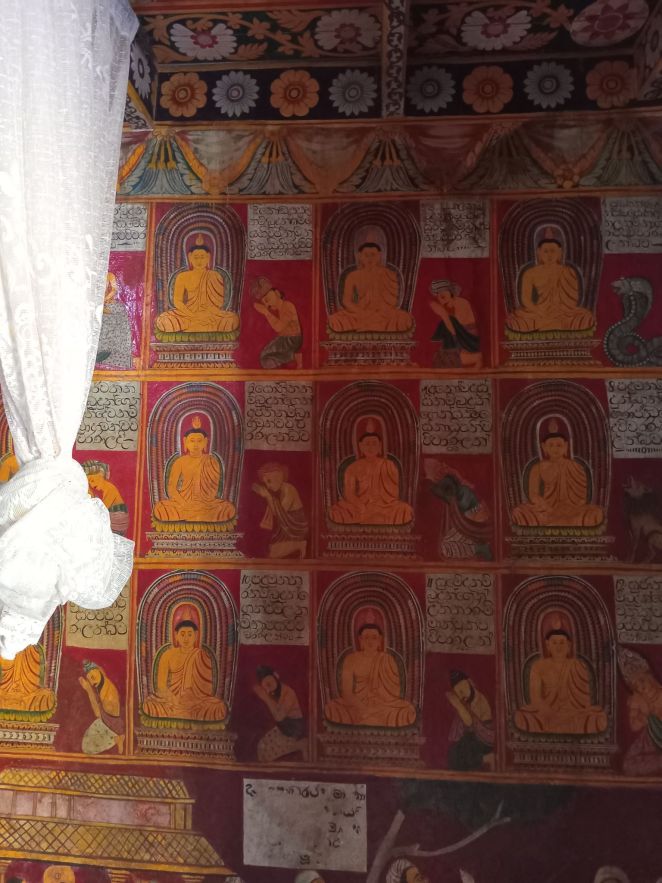
The sacred Bodhi tree
There is also a Bodhi tree next to the Nàtha Devàla temple at which local pilgrims offer water, flowers and offerings and circumambulation:
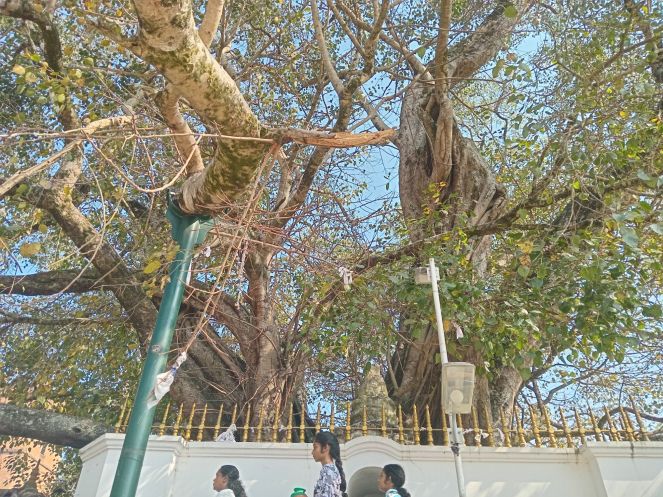



The Kandy Lake: mystical magical hills



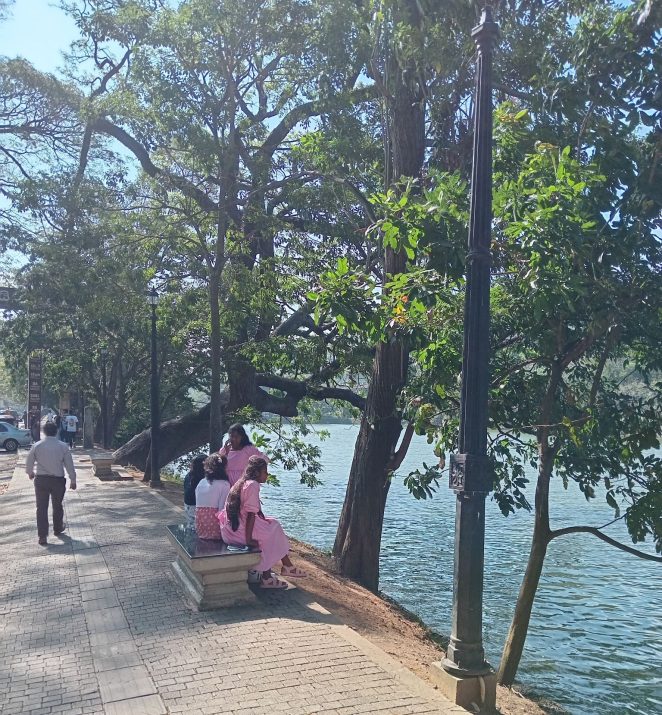
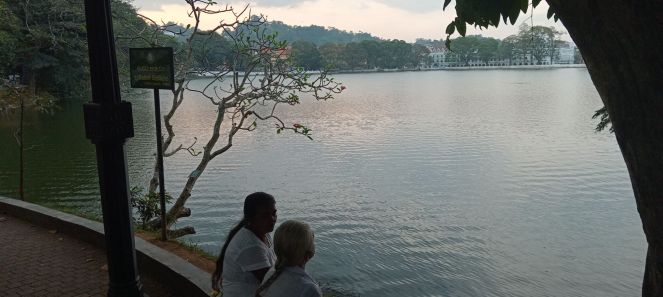
The wildlife and birds around the lake and area was stunning too. Every evening during sunset, masses of midnight-blue ravens and pure whit storks who fly around in groups squawking loudly. The ravens who go and sit in the trees on one side of the lake, the white storks on a tree on the other side. Like black and white, Ying and Yang perfection. The white storks in particular looked like white blossom from afar.

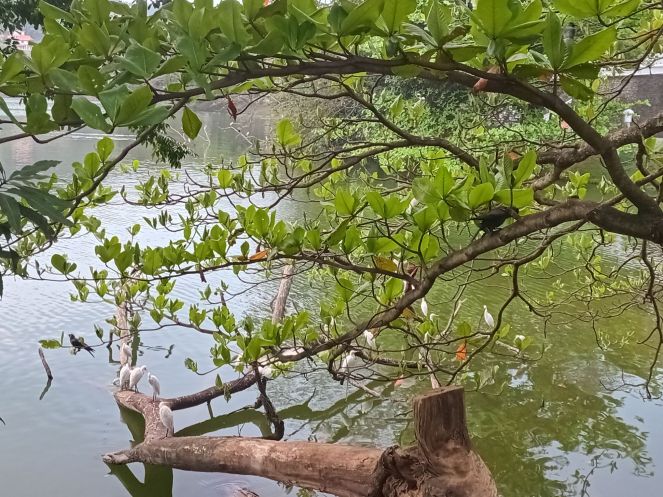

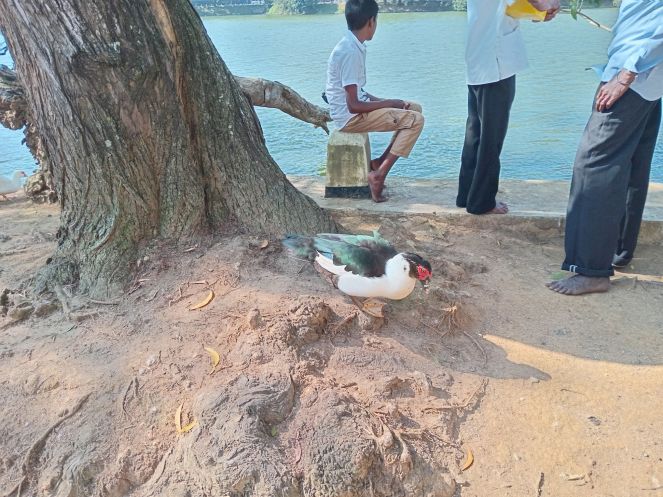
The Bodhi Buddha on the hill
From the lake one can see on a hill a huge white Buddha statue, called the Bodhi Buddha. I took a rickshaw up there alone, and walked the steps up to the statue itself. Here are the photos of it and the view of Kandy from below. The statue looks stunning in the night skies as well from the lake:


